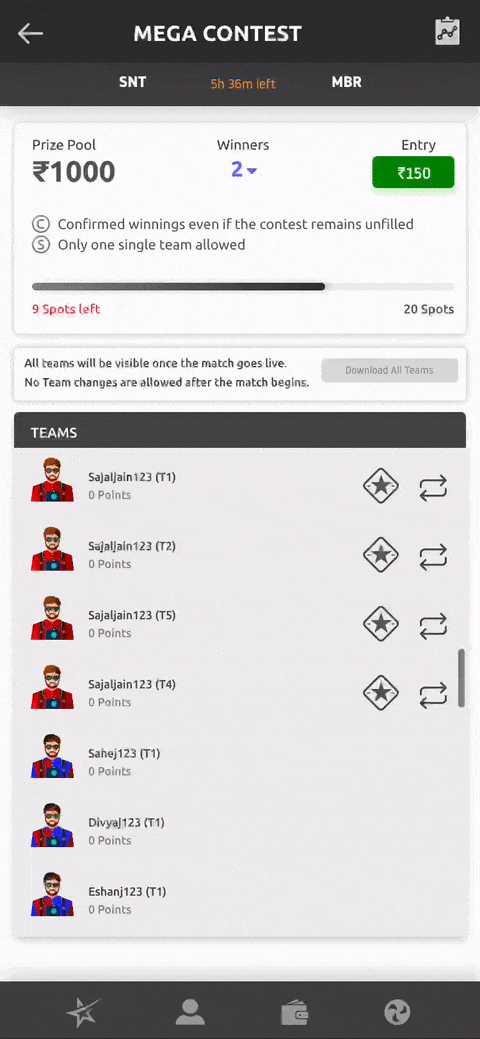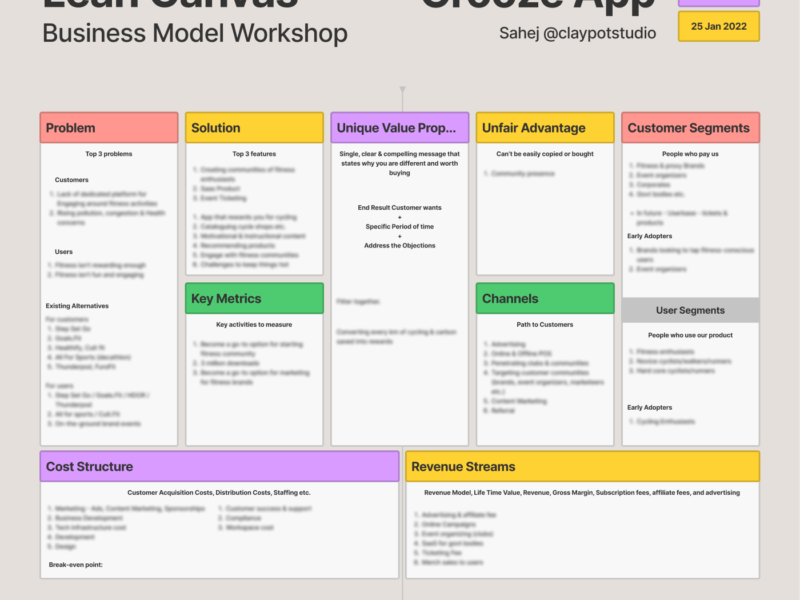Reducing Perceived Loss for New Fantasy Cricket Players

New knowledgeable users needs a more rewarding and less penalising gameplay in order to avoid frustration arising from initial losses and focus on systematic and skill-based winning rather than one-off wins.
As of 2022, Skilsta has been indefinitely withdrawn from the market.
Overview
Skilsta is a legal, limited and transparent sport betting game where users create teams based on real-life cricket matches.
Each selected player in the team is granted points based on performance in the real match. Users with top ranking teams (based on overall score at the end of the match) earn cash rewards.

Unlike sports betting, the users are not allowed to swap players once the match goes live and hence a larger emphasis is put on skills rather than luck and momentum.
Problem Statement
New knowledgeable users needs a more rewarding and less penalising gameplay in order to avoid frustration arising from initial losses and focus on systematic and skill-based winning rather than one-off wins.
Users & Audience
Users can be broadly divided into two categories based on gameplay strategy.
Early experience determines their fate to a large extent. Our goal is to convert as many new users to type 2 users.

Users can be broadly divided into two categories based on gameplay strategy.
Early experience determines their fate to a large extent. Our goal is to convert as many new users to type 2 users.

Roles & Responsibilities
Role: Product Designer
My major responsibilities included:
- Translating user insights
- Maximising product potential
- Researching growth opportunity and presenting to key stakeholders
- Ideating possible solutions
- Prototyping & UI Design
Other members:
- Worked with CTO – expert in cricket and algorithms
- Worked with CEO – expert in finance and compliance
Scope & Constraints
Low budget & limited research
The startup had been bootstrapped and was running the pilot and developing the final product for over 2 years. This meant that the budget was really low.
Secondly, due to low budget and time constraints, UX research opportunities were scarce.
We had to settle with competitive analysis and online literature on user behaviour in this niche. Although we had our own user insights but the data was prone to bias as the initial customer base provided for a small sample size.
Process & Solutions
Reducing perceived loss by dampening the outcome curve

New users are less analytical and are prone to trust issues. Their investment choices are driven by feeling rather than data. Thus, we targeted the emotion of loss by simulating the emotion of being rewarded using in-app currency.

The diagram above explains the relation between perceived loss and simulated winnings. We knew we wanted to introduce an in-app currency. Since the main feature of this currency would be to enable users to join matches, we chose to model it after real-life tickets that are required to watch matches.

The strength of this currency would indirectly influence the perceived loss, hence the next logical step was to work on strengthening the In-App Currency.
Increasing the In-App Currency Value
We based our goals on the mechanics of real world currencies. In simple terms, the value of a currency rises due to these features (and more):
- Lower inflation value → Distribution should be less than expenditure
Tickets were to be distributed from a limited source only. - High purchasing power → Currency should be able to make valuable trades
The highly valuable “Power-ups” could only be purchased using tickets, this made the dealing of tickets necessary for the user. - Strong Economic Performance → Currency bought items should have higher returns (or, have low-risk)
We limited the matches user could join with tickets. Specific low-risk-low-gain matches were chosen for this purpose. These would also make up for losses incurred from regular gameplay.

Blasting Stimuli with Sweepstakes
We imported the high-risk-high-reward principle of betting in a safer, legal and ethical form by introducing randomness in the distribution mechanism. The potential promise of a big reward allows for extra motivation while maintaining the net reward. Further, we decided to disburse occasional mega-winnings (100 tickets) to blast user stimuli.

The Pseudo-hook
While, the primary gameplay incorporates a hook by default, we designed the pseudo-hook to serve as the internal trigger to the main hook.
As a routine feature, users were sent notifications to join a match (external trigger). As the primary goal is to encourage the user to join more matches, we decided to give away a free shot at the sweepstakes (action) in anticipation of Tickets (variable reward) each time the user joins a match (investment). The blasted stimuli would then kick-in to provide additional motivation (internal trigger) to spin the wheel which would in turn provide additional motivation to join a match (internal trigger to the main hook).

Early Prototypes
We were looking towards GPay and PayTM as they had recently introduced gamification to their experience. Some initial wireframes were sketched up.

Final User Interface
Here are some snaps from the final UI.



Results
Skilsta was withdrawn from the market too early for us to measure results.



